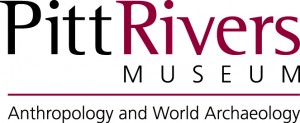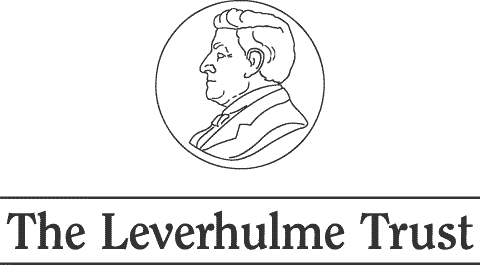Introduction to Rethinking Pitt-Rivers databases
Explaining the databases and how to use them
Following the database link on the right hand menu of the website leads to an introductory page giving access to two databases, one for the founding collection and one for the second collection.
The Pitt Rivers Museum's founding collection
This database replicates the entries that are available here, for the circa 23,000 objects from Pitt-Rivers in the Pitt Rivers Museum at Oxford. [1] The scanned illustration shows the accession book entry, compiled in the 1920s by E.S. Thomas at Oxford for all the known founding collection objects at that time. Note that many thousands of additional objects have been found unentered after those books were compiled and are also included here. This database is a version of the Pitt Rivers Museum objects database, available here, but only contains the entries relating to the founding collection of the Pitt Rivers Museum, given by Augustus Henry Lane Fox Pitt Rivers in 1884 to the University of Oxford.
These entries were first created by Alison Petch during the first research project funded by the Leverhulme Trust between 1995-1998, they have been updated many times since then and are still being amended today by museum staff who find previously unaccessioned founding collection artefacts or by researchers and staff who find out new information about each piece.
The Pitt-Rivers Second Collection
This database was compiled during the 'Rethinking Pitt-Rivers' project.
The first building blocks were the scans of the catalogue [Add.9455], previously owned by the Pitt-Rivers family and now held by the Cambridge University Library. We are very grateful to the Leverhulme Trust whose funding, via this project, made the scanning of these important volumes possible. We are also grateful to Cambridge University Library for providing such excellent high-quality scans from which the on-line database was prepared. Copyright for these images is explained here.
Navigating the databases
The introductory page gives access to both databases either by searching each volume of the accession books for the founding collection or the books of the catalogue of the second collection. If you choose this method then the scanned images of the books are shown on the left hand side of the database. Using the white arrows that appear on either side of the scanned image you can move backwards and forwards through the volumes' pages, if you wish to move from volume to volume you can use the 'Select a volume' buttons on the top right of the screen.
On the right hand side of the database you can see a list of all the artefacts that appear on the scanned page at the bottom right of the screen. These are numbered 1 to whatever (second collection) or by accession number (founding collection). These are a list of all the items that appear on the page of the volume that you are currently viewing. Click on any of these entries to see the full database entry for each item.
It is also possible to search the transcribed database to find all the objects in the catalogue that interest you. To do this you can use the 'Search' buttons on the introductory page. Here you can perform a wild-card search of both collections, where you can type in any term that interests you and hope that it appears in one or more entry. Or you can search each collection's artefacts separately. Selecting this method allows you to search using separate fields. This allows you to perform a more regimented search for terms that should be present in specific fields on the database.
If, for example, you wish to find items associated with William Matthew Flinders Petrie, you can search for his name in the field collector, or Pitt-Rivers source fields (where 80 records would appear for browsing) and find those items. If however you wished to find out how many Ancient Egyptian pottery vessels there were in Pitt-Rivers second collection you would probably be best searching for 'Egypt' in the country field (selected from the pop-up list) and 'Pottery' in the Class (or materials) fields though this search would give a result which also included a small number of contemporary non-archaeological Egyptian vessels. Once a series of records have been found you can click on any one to find the full database entry and matching scanned page. Using the buttons on the bottom right and left of the screen you can move backwards and forwards between the found entries. If you wish to see a full-sized image of the scan of any page then click on the thumbnail. If you wish to perform another search then select 'Main Menu' button on the top right of the screen at any time.
Please let us know if you spot any errors or inconsistencies with our data. Send an email to: This email address is being protected from spambots. You need JavaScript enabled to view it.
Alison Petch, August 2010 updated December 2011; revised February 2013
Notes
[1] 22830 as at February 2013, this number is likely to increase over 2013 as the Excavating Pitt-Rivers project continues to find unentered items


